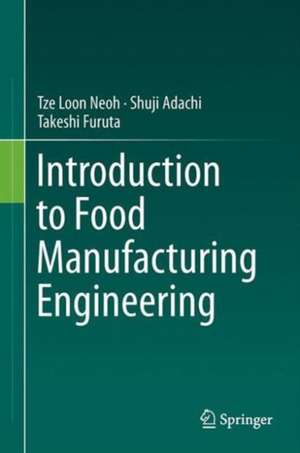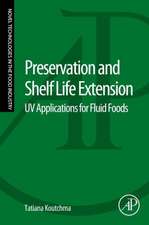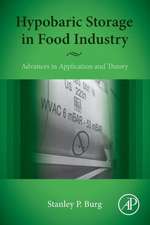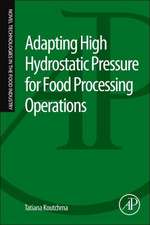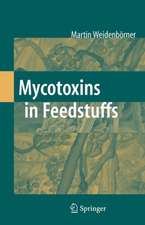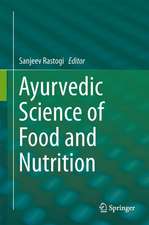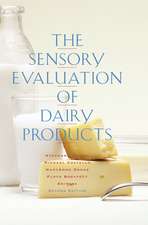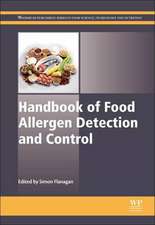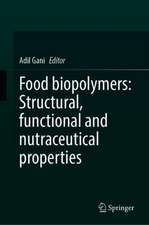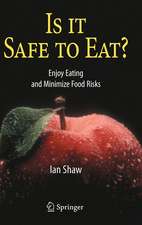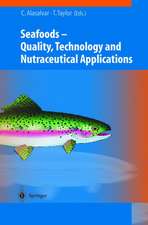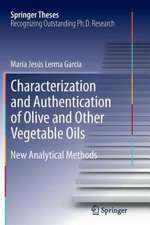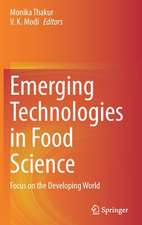Introduction to Food Manufacturing Engineering
Autor Tze Loon Neoh, Shuji Adachi, Takeshi Furutaen Limba Engleză Hardback – 13 sep 2016
| Toate formatele și edițiile | Preț | Express |
|---|---|---|
| Paperback (1) | 394.46 lei 38-44 zile | |
| Springer Nature Singapore – 9 sep 2018 | 394.46 lei 38-44 zile | |
| Hardback (1) | 530.75 lei 3-5 săpt. | |
| Springer Nature Singapore – 13 sep 2016 | 530.75 lei 3-5 săpt. |
Preț: 530.75 lei
Preț vechi: 624.41 lei
-15% Nou
Puncte Express: 796
Preț estimativ în valută:
101.57€ • 110.29$ • 85.32£
101.57€ • 110.29$ • 85.32£
Carte disponibilă
Livrare economică 01-15 aprilie
Preluare comenzi: 021 569.72.76
Specificații
ISBN-13: 9789811004414
ISBN-10: 9811004412
Pagini: 190
Ilustrații: XI, 179 p. 110 illus., 45 illus. in color.
Dimensiuni: 155 x 235 x 14 mm
Greutate: 0.51 kg
Ediția:1st ed. 2016
Editura: Springer Nature Singapore
Colecția Springer
Locul publicării:Singapore, Singapore
ISBN-10: 9811004412
Pagini: 190
Ilustrații: XI, 179 p. 110 illus., 45 illus. in color.
Dimensiuni: 155 x 235 x 14 mm
Greutate: 0.51 kg
Ediția:1st ed. 2016
Editura: Springer Nature Singapore
Colecția Springer
Locul publicării:Singapore, Singapore
Cuprins
Chapter 1. Contribution of Food Engineering to Everyday Meals.- Chapter 2. Bookkeeping of A Process.- Chapter 3. Wheat Flours and Their Derived Products.- Chapter 4. Instant Coffee.- Chapter 5. Mayonnaise and Margarine.- Chapter 6. Food and Microorganisms.- Appendix.
Notă biografică
Tze Loon Neoh, Ph.D.
Okawara Mfg. Co., Ltd.
1235 Kando, Yoshida, Haibara, Shizuoka 421‐0304, Japan
Division of Food Science and Biotechnology, Graduate School of Agriculture
Kyoto University
Oiwake‐cho, Kitashirakawa, Sakyo‐ku, Kyoto 606‐8502, Japan
Takeshi Furuta, Ph.D.
Department of Chemistry and Biotechnology, Graduate School of Engineering
Tottori University
4‐101 Koyama‐Minami, Tottori 680‐8552, Japan
Textul de pe ultima copertă
This book provides basic food engineering knowledge for beginners. The discipline of food processing conforms with actual food manufacturing flows and thus is readily comprehensible, although food engineering has great diversity as the common principles of operations for most food manufacturing processes are covered. This volume therefore endeavors to initially embody food manufacturing flows and pays careful attention to quantitatively detailing and explaining the manufacturing operations involved from an engineering point of view. Because this book is intended to be a very basic introductory text for food engineering, it introduces a variety of foods and food ingredients with which the intended readership is familiar to explain comprehensively the fundamental unit operations through the manufacturing flows. Various real foods and food ingredients are used to explain the principles of food engineering so that students of food science, technology, and engineering courses will be able to better grasp the basic concepts. The book includes many exercises for learning how to draw proper graphs and how to deal with mathematical formulas and numerical values. Readers can learn common principles, which are easily applicable to other fields such as pharmaceuticals and biotechnology, through the many examples that are provided.
Caracteristici
Provides as many example problems as possible for understanding mathematical formulas and numerical values better Demonstrates how proper figures are produced and includes many sample questions and exercises for which the solutions can be obtained from constructed figures Enriches understanding of the basic concepts and subsequently further deepens the level of understanding via other systematic reference materials
